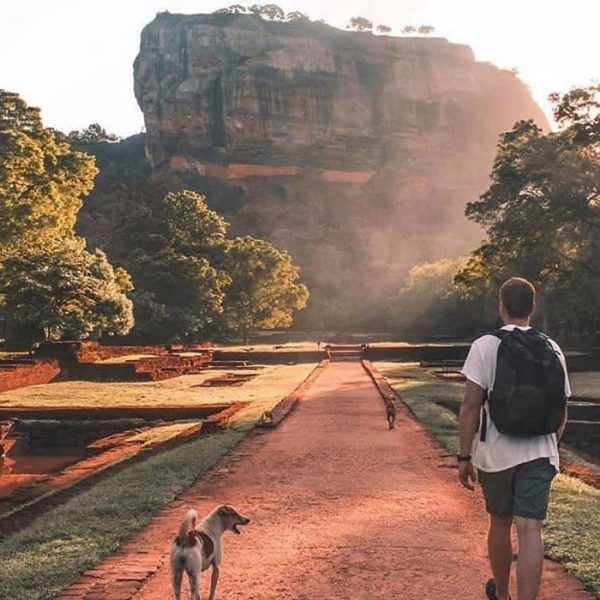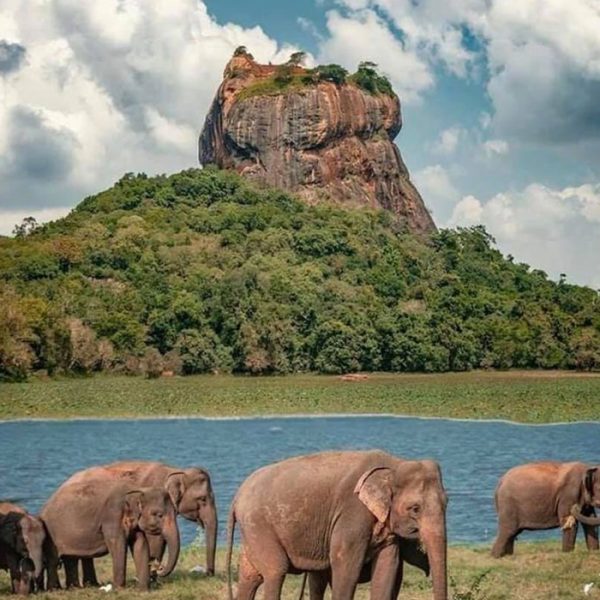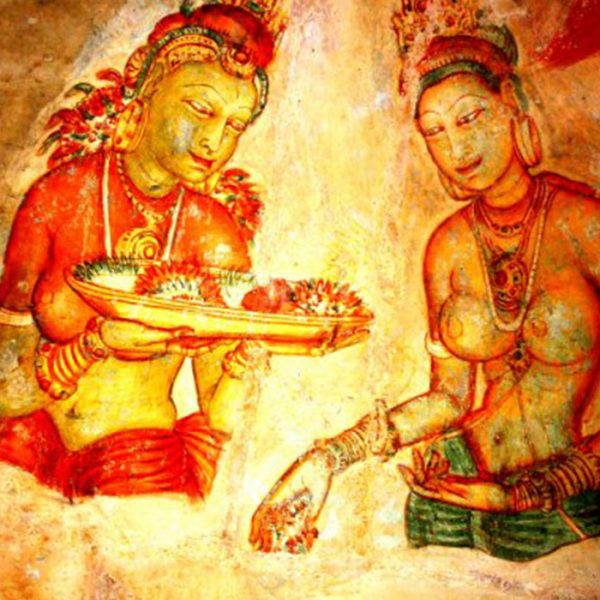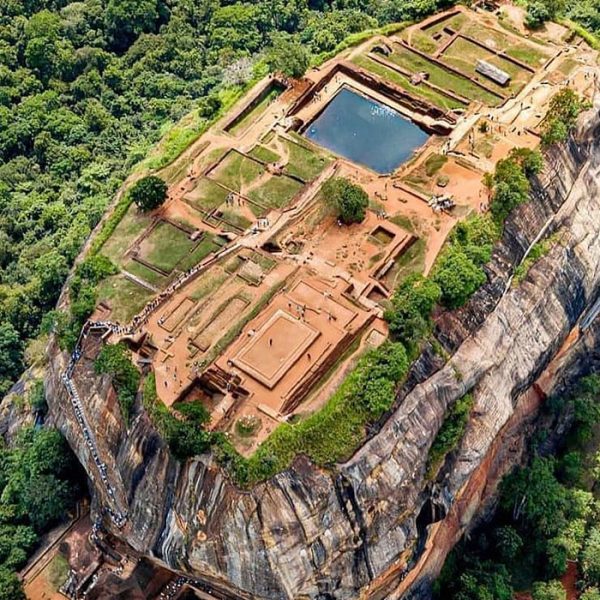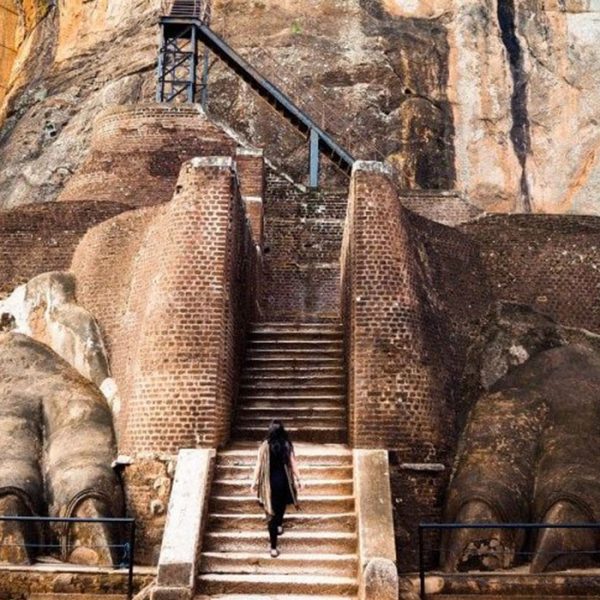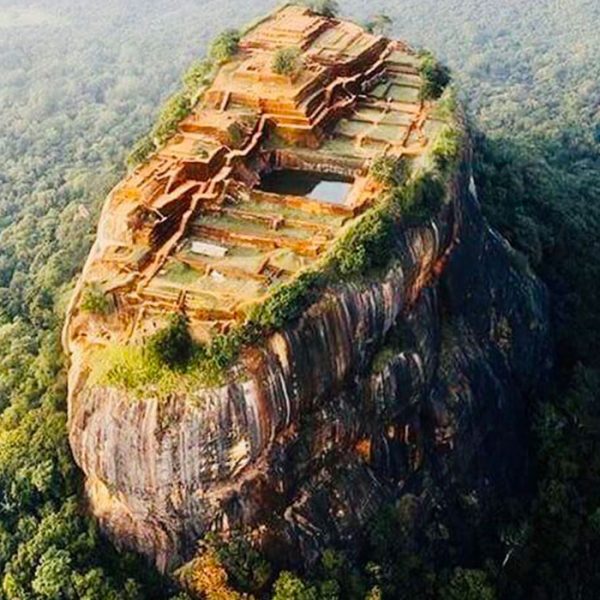Rising dramatically in the middle of Sri Lanka’s Cultural Triangle comprised of Kandy, Anuradhapura and Polonnaruwa, and between the towns of Dambulla and Habarane, lies Sigiriya Rock, also known as the Lion Rock. This UNESCO-listed World Heritage Site is considered one of the best-preserved examples of ancient urban planning on a massive rocky plateau and sits 370 meters above sea level.
Series of staircases and the remnants of an enormous lion constructed of bricks and plaster provide access to the gigantic near-vertical steep slopes and flat topped granite peak of Sigiriya Rock.
King Kashyapa (or King Kassapa) is believed to have fortified and made Sigiriya Rock his citadel for 18 years during 477 – 495 CE. It is believed that the creators tried to soften the rough layout of the Sigiriya Rock structure with water features such as water gardens, cave and boulder gardens, and also terraced gardens. The irrigation systems and technology used to supply water all the way up to the palace constructed on the summit of Sigiriya Rock, baffles the experts to this day.
Sigiriya Rock was built in 3 levels: the lower level was given access by five gates and was protected by a broad moat enclosed within two-tiered walls. This level was full of different units housing palace functions and the fortress complex.
The second level is the main access point to the Sigiriya citadel. This was once believed to have been decorated with an enormous lion statue built with bricks and plaster, and its the feet from stone, thus giving it the name Lion’s Rock. The feet made with rock are the only remnants of this massive statue today.
The third and the top level held the palace; however, the ruins of the two-brick-tall foundations of the palace walls are the only remains standing to this day.
Entrance Ticket Cost : 6100 LKR


